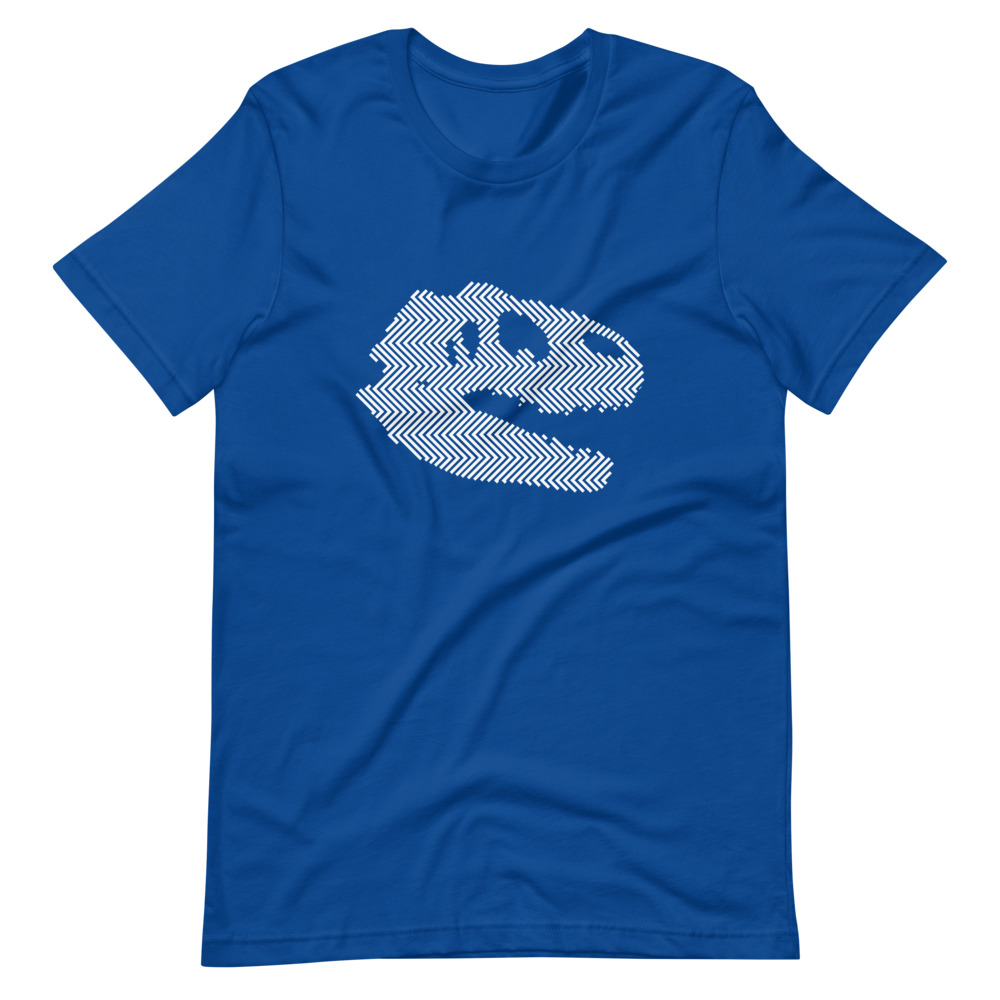
Close up of “Sue” T. rex replica skull at the Field Museum of Natural History in Chicago, IL.
Photo by Scott Robert Anselmo
Enjoy 26 facts about Tyrannosaurus rex
- Barnum Brown, assistant curator of the American Museum of Natural History, found the first partial skeleton of Tyrannosaurus rex in eastern Wyoming in 1900.
- Henry Fairfield Osborn, president of the American Museum of Natural History, named the Tyrannosaurus rex in 1905. Tyrannosaurus rex means Tyrant Lizard King. It is from the Greek tyrannos (tyrant) and sauros (lizard). Rex means king in latin.
- T. rex lived in what is now western North America. Tyrannosaurus rex specimens have been found from Saskatchewan to New Mexico.
- Tyrannosaurus remains have been discovered in several different types of ecosystems, including inland, coastal/swampy, and semi-arid to arid plains.
- Tyrannosaurus rex was one of the largest land carnivores of all time; the largest complete specimen (the famous “Sue” – see right) measured 40 ft in length, 13 ft tall at the hips, and weighed up to 6.8 metric tons.
- The debate about whether Tyrannosaurus was an apex predator or scavenger is among the longest running in paleontology; however, most scientists agree that Tyrannosaurus rex was an opportunistic carnivore, both predating and scavenging.
- The forelimbs had only two clawed fingers, along with an additional small metacarpal representing the remnant of a third digit. The two fingered forelimbs might have been used to help T. rex rise from a resting pose or hold prey.
- The tail was heavy and long, sometimes containing over forty vertebrae, in order to balance the massive head and torso.
- The largest known Tyrannosaurus rex skulls measure up to 5 feet in length.
- When Tyrannosaurus rex hit around the age of 14 its body size would increase rapidly, putting on around 1300lbs a year over the next 4 years.
- The bite force of Tyrannosaurus could have been the strongest of any terrestrial animal that has ever lived. The calculations suggest that adult T. rex could have generated from 35000 to 57000 newtons of force in the back teeth, or the equivalent of three times the force estimated for a great white shark, 15 times the force of an African lion, 3 and a half times the force of an Australian saltwater crocodile and around 7 times the estimated force for Allosaurus.
- The T. rex had the largest tooth of any carnivorous dinosaur measuring in at 12 inches long.
- Over half of the known Tyrannosaurus rex specimens appear to have died within six years of reaching sexual maturity.
- Scientists have recovered soft tissue from the marrow cavity of a fossilized leg bone. Flexible, bifurcating blood vessels and fibrous but elastic bone matrix tissue were recognized. In addition, microstructures resembling blood cells were found inside the matrix and vessels.
- Researchers argue whether T. rex was covered in a fuzzy coating of protofeathers rather than scales due to the presence of protofeathers in related species of similar size.
- Tyrannosaurus may have been slow to turn, possibly taking one to two seconds to turn only 45°.
- The maximum speed estimates range from 45 mph to the distinctively less terrifying 11mph.
- Tyrannosaurs had 13 times the visual acuity of a human (an eagle has 3.6 times).
- The sense of smell in tyrannosaurs may have been comparable to modern vultures, which use scent to track carcasses for scavenging.
- Tyrannosaurus rex heard best in the low-frequency range.
- There is evidence of cannibalism amongst Tyrannosauruses. The teeth marks indicate scavenging rather than combat.
- Tyrannosaurus had a larger brain to body size proportion than crocodiles and three times more than plant eating dinosaurs such as Triceratops of the same size.
- Manospondylus gigas (meaning “giant porous vertebra”) was the first name applied to a Tyrannosaurus rex fossil in 1892.
- “Sue” was purchased for $7,600,000 by the Field Museum of Natural History making it the most expensive dinosaur skeleton to date.
- T. rex left footprints 1.5 feet long, and had a stride length of 12 feet to 15 feet.
- Scientists believe that T. rex could consume up to 500 pounds (230 kg) in one bite.




